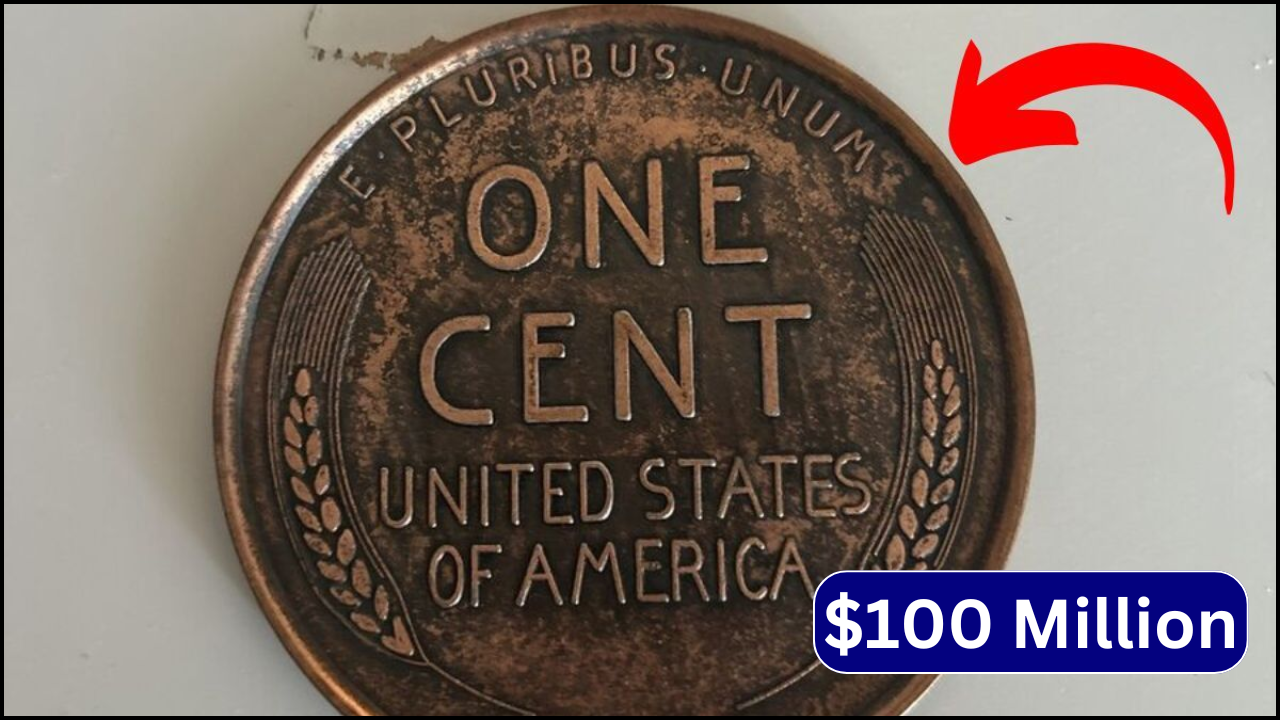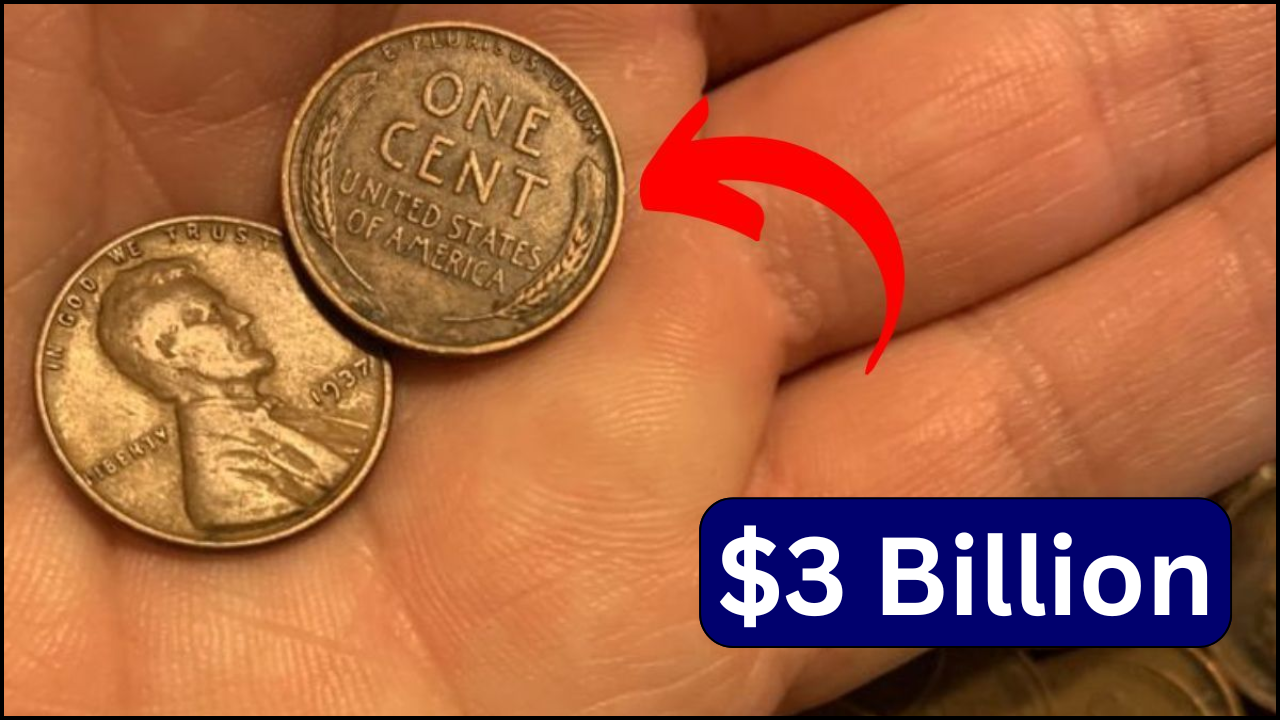
The Lincoln Wheat Penny holds a special place in American numismatics (coin collecting). Created in 1909 to mark the 100th anniversary of Abraham Lincoln’s birth, these copper coins feature Lincoln’s profile on the front and two wheat stalks on the back—giving them their popular nickname. For nearly 50 years until 1958, billions of these pennies circulated through American pockets and cash registers. While most are worth just one cent today, certain rare versions can be extremely valuable, with one particular variety potentially worth an astonishing $510,000.
The Most Valuable Varieties
The 1943 Copper Penny: A Wartime Mistake
During World War II, copper was needed for war materials, so the U.S. Mint switched to making pennies from steel in 1943. However, a few copper blanks accidentally made it into the production line, creating the extremely rare 1943 copper penny. These “mistake coins” are valuable precisely because they were never supposed to exist. With only about 20 known to collectors, finding a genuine 1943 copper penny could mean discovering a coin worth hundreds of thousands of dollars. The most valuable example, a perfect 1943-D (Denver mint) copper penny, reportedly sold for over $1.7 million in a private sale.
The Lincoln Wheat Penny Worth $40 Million, Small Coins, Big History
The Lincoln Wheat Penny Valued at $5.5 Million, Reality, and the Joy of Collecting
The Lincoln Wheat Penny Valued at $410K, Historical Treasure or Urban Legend?
The Lincoln Wheat Penny Valued at $3 Billion, Separating Fact from Fiction
Rare Bicentennial Quarter Worth $2.2 Billion, Three Coins That Could Change Your Life
The 1909-S VDB: The Designer’s Mark
Another highly prized variety is the 1909-S VDB penny. The designer, Victor David Brenner, placed his initials (VDB) on the reverse side of the coin. After public criticism about the prominence of these initials, the Mint quickly removed them—but not before a small number (only 484,000) were produced at the San Francisco Mint (indicated by the “S” mint mark). Today, even worn examples can sell for thousands of dollars, while perfect specimens might fetch tens of thousands.
Other Valuable Dates and Varieties
Beyond the two most famous rare pennies, collectors also prize several other dates:
- 1914-D (Denver mint)
- 1922 (with no mint mark)
- 1931-S (San Francisco mint)
The value of these coins varies greatly depending on their condition and authenticity.
How to Identify Valuable Wheat Pennies
Key Identification Factors
Finding a valuable wheat penny requires knowing what to look for. First, check the date and mint mark. For the 1943 copper penny specifically, a simple test can help determine authenticity—magnets will attract steel pennies but not copper ones. However, be cautious of counterfeits; some fraudsters copper-plate steel pennies or alter dates on copper pennies from other years.
Condition Matters
The condition of a coin dramatically affects its value. Collectors use a grading scale from Poor (barely identifiable) to Mint State (perfect, as if just made). The better the condition, the higher the value, with uncirculated coins commanding the highest prices.
Proper Handling and Preservation
If you believe you’ve found a valuable wheat penny, proper handling becomes crucial. Never clean old coins this can significantly reduce their value. The natural aging process creates a patina that collectors appreciate. Store potentially valuable coins in protective holders made specifically for coins, and handle them only by their edges to prevent oils from your fingers from damaging the surfaces.
The Market for Rare Pennies
The market for rare Lincoln Wheat Pennies remains strong. Serious collectors are always looking to add these historic pieces to their collections. Specialized coin auctions often provide the best venue for selling valuable specimens, with professional dealers helping to authenticate and properly value these coins.
Different Perspectives on Coin Collecting
The Historical Perspective
For many collectors, these coins represent tangible connections to American history. The Lincoln Wheat Penny spans significant periods including both World Wars, the Great Depression, and the early Cold War era. Each coin tells a story about the economic and political climate of its time.
The Investment Perspective
Some view rare coins primarily as investments. While most wheat pennies aren’t worth much more than face value, the exceptional rarities can be appreciated significantly over time. However, like any investment, rare coins carry risks, including market fluctuations and authentication challenges.
The Hobby Perspective
For many, the appeal of collecting wheat pennies isn’t about monetary value but the joy of the hunt. Searching through change, coin rolls, or inherited collections provides a treasure-hunting experience accessible to almost anyone. This aspect of coin collecting attracts people of all ages and backgrounds.
In Summary
What makes coin collecting so appealing is that anyone might discover something valuable in their everyday change. People continue to find valuable wheat pennies in circulation, in old collections passed down through families, and even in rolls of pennies from banks. This ongoing treasure hunt encourages people to look more carefully at the coins that pass through their hands. The possibility, however small, of finding an extremely valuable penny makes checking your change both exciting and potentially rewarding.
Whether you’re a serious collector, a history enthusiast, or simply curious about the change in your pocket, the Lincoln Wheat Penny offers an accessible entry point into the fascinating world of numismatics—where history, art, and potential value converge in a small copper disc.




